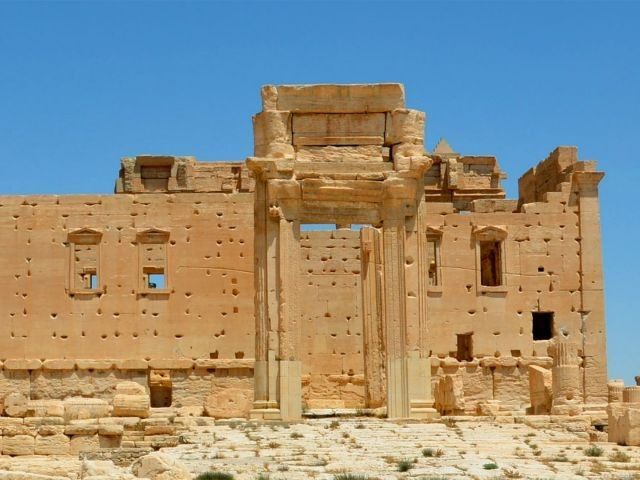Activists and residents in Palmyra, Syria, told rights groups that the Islamic State (ISIS/ISIL) partially destroyed the 2,000-year-old Temple of Bel. Fortunately, part of the temple is still standing.
Reports from Palmyra have been unreliable, as residents are barred by jihadists from getting close enough to the temple in order to confirm exactly what occurred.
“We are waiting for details on the truth of what occurred, the exact location inside the temple, and the size of the destruction,” explained Maamoun Abdulkarim, head of the Syrian Department of Antiquities and Museums.
The Temple of Bel is considered “the most important temple in Syria – and of the most important in the whole Middle East.” The temple was dedicated to the god Bel, who was worshiped with Aglibol and Yarhibol. Abdulkarim and others saved numerous priceless artifacts when ISIS made it clear that Palmyra was a target. They could not move the large temples and statues.
ISIS captured the UNESCO Heritage Site in late May. Militants promised the world no one would destroy the historic town. However, the terrorists broke that promise a month later when they destroyed the statue Lion of al-Lat, which stood guard at the Temple of Bel.
The news comes only days after ISIS released images of militants obliterating the temple of Baalshamin in Palmyra:
The images, posted on social media by supporters of the group, showed militants carrying barrels of explosives and laying them inside the temple. Other smaller wired cans lay around the temple walls and columns. Then an image shows a grey plume of smoke rising above the temple from a distance, and then an image of the temple reduced to a pile of rocks. One caption read: “The complete destruction of the pagan Baalshamin temple.”
Militants beheaded Khaled Asaad, a beloved archaeologist, in Palmyra on August 18. The 82-year-old lived and worked in the UNESCO Heritage Site for over 50 years. The terrorists held Asaad for over a month and interrogated him “about the location of treasures” saved before ISIS moved in. They promptly executed him when he refused to provide any information and “hung his body on a column in a main square” in the city.
ISIS is known for dismantling and destroying history in the towns they seize. Militants insist the group demolishes these items because they promote idolatry. Yet, before they blow up the buildings, witnesses have repeatedly reported seeing the men leaving with artifacts and antiques a few days before the destruction. The group started with only a few dollars, but selling antiques on the black market propelled ISIS into billionaires.

COMMENTS
Please let us know if you're having issues with commenting.